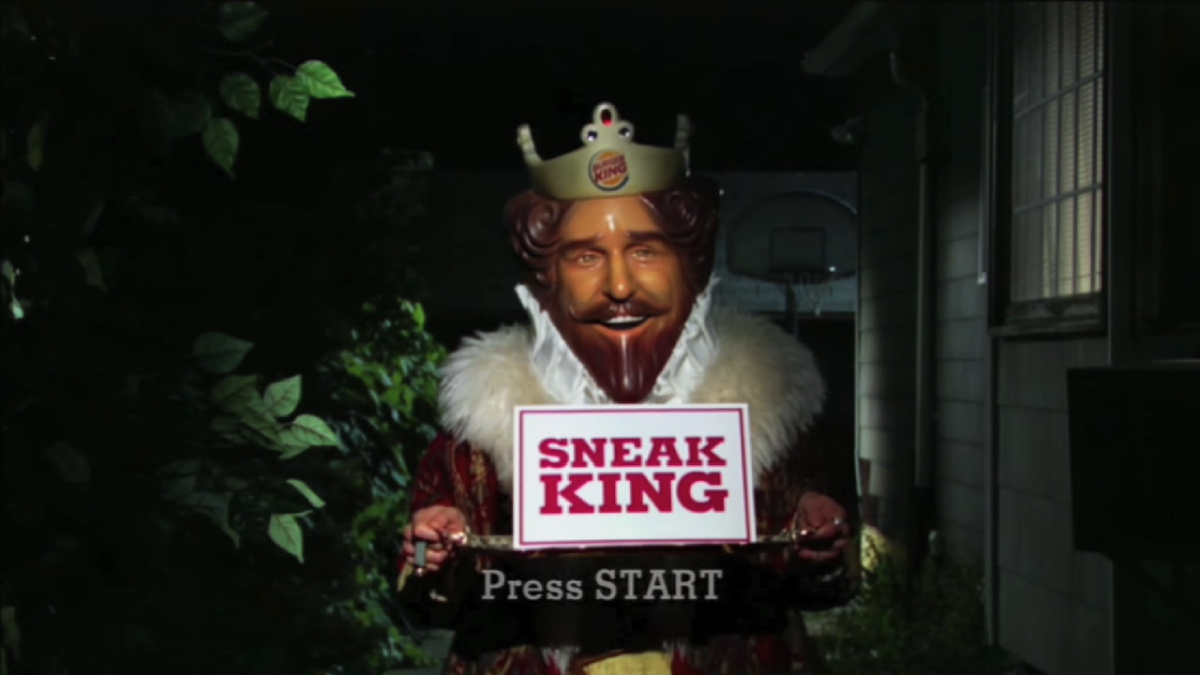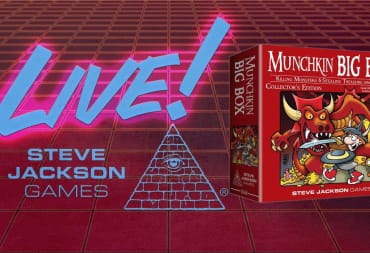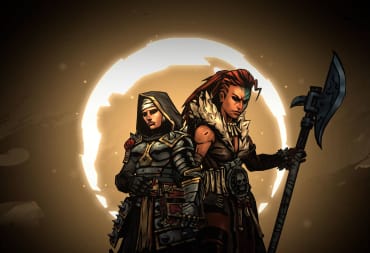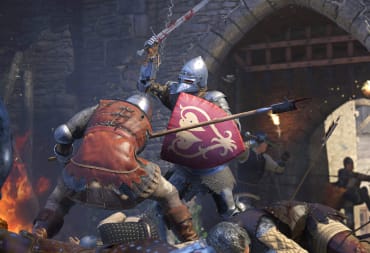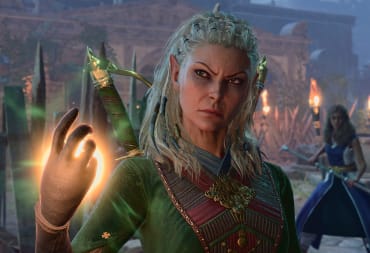Licensed games are weird. Low risk and cheap to make, they were basically easy advertisements throughout the 8-bit and 16-bit era. Then came a Cambrian explosion of movie tie-ins during the PS2 era. It seemed every movie and every junk food product, no matter how irrelevant, needed its own game. It didn’t matter if the license fit the gameplay. While the 90s had plenty of licensed shovelware, the 3D era brought about a unique brand of strangeness in terms of gameplay and theming.
This practice created a lot of bad licensed games and a lot of bizarre licensed games. While there’s a lot of overlap between the two, I want to draw your attention to something very specific. The licensed games where the concept is a bizarre mix of IP and gameplay. While it would be easy to fill this list with NES-era games, we’re going to focus on titles from the PlayStation-era onward.
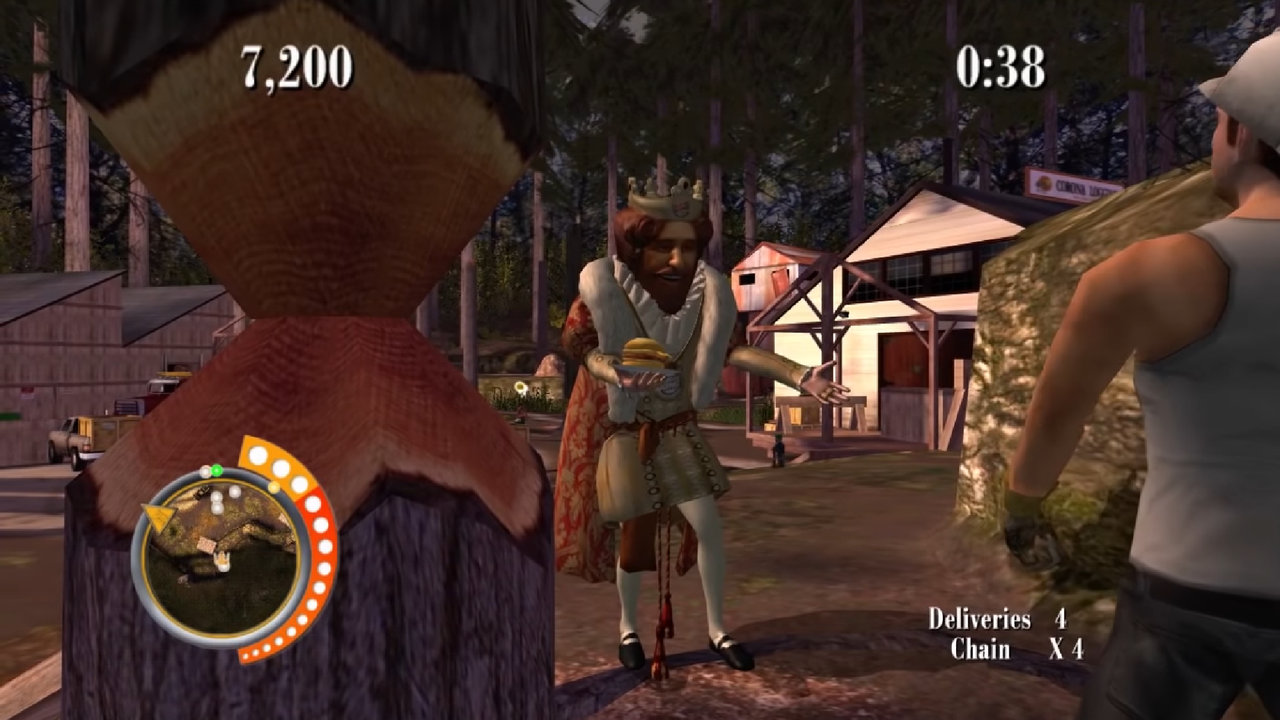
Sneak King
The most memorable of the three Burger King games released in 2006. For just $3.99 with the purchase of a meal, Sneak King seemed like a no-brainer at the time, especially when most games in 2006 cost around $60.Sneak King puts you in the role of The King, Burger King's now outdated mascot. You must sneak up to hungry people, do a little dance based on a charge meter, and give them sandwiches whose names end in registered trademarks. If a hungry person sees The King, they lose their appetite. How strangely fitting.
Even for a fast food tie-in, Sneak King is weird. It’s an unchallenging stealth game with wonky controls and a bizarre premise. It’s ugly, even by 2006 standards. However, given the task of emulating a Burger King commercial, I think it succeeded. You may not remember, but 2006 Burger King commercials had The King patiently waiting next to sleeping people like a slasher villain. It doesn’t help that he has that creepy, lifeless face.
Sneak King is great at recreating that bizarre and almost nostalgic moment in television, even if it gives off vibes of a corporate dystopia. Incidentally, can I interest you in a Burger King ® Enormous Omelet Sandwich®?
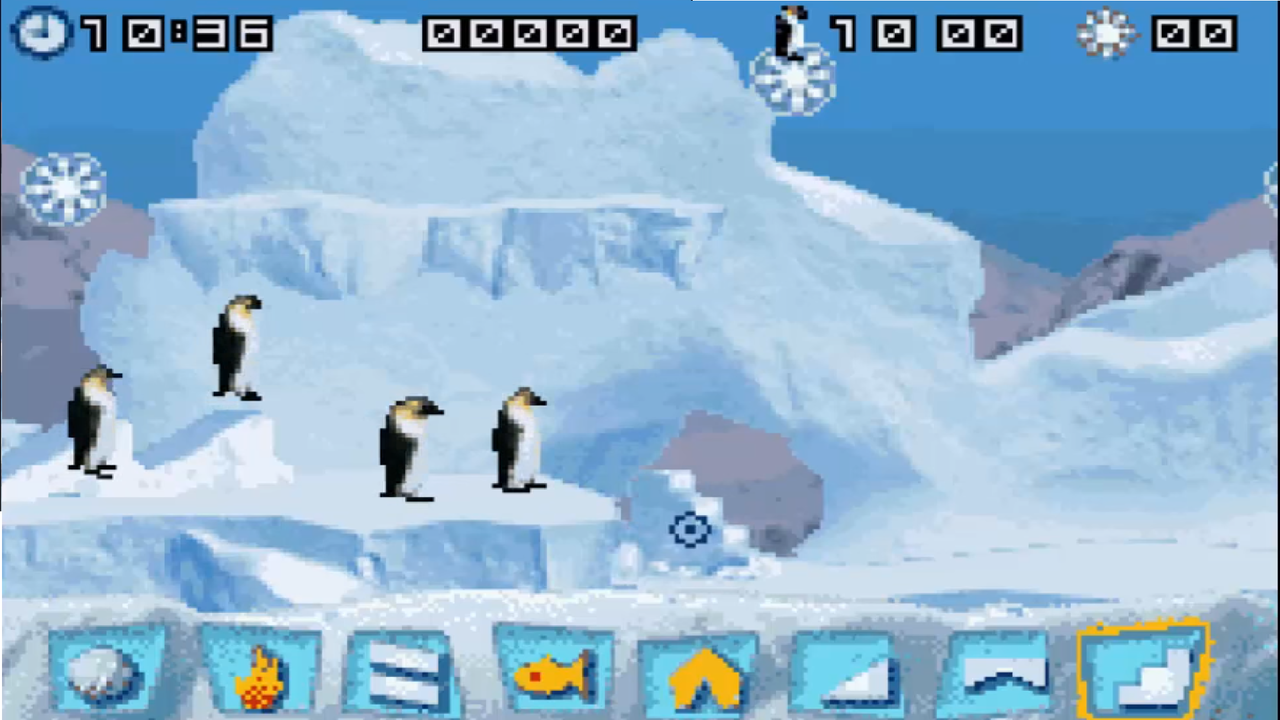
March of the Penguins
How? How could anyone possibly make a game based on a documentary about flightless birds migrating across a frozen wasteland? March of the Penguins resides somewhere at the corner of strange and boring. As a penguin god, you must guide a group of your subjects from the left side of the screen to the right within the requested timeframe.As the penguins encounter obstacles, you must place a series of ramps, stairs, and bounce houses to help them to the end. Don’t forget to use to your god powers to push them through snowflakes. If you don’t collect the required number of snowflakes by the end, you fail.
March of the Penguins isn’t good, but it is unique. You can look at a single screenshot and perfectly understand how it plays. I can’t think of anything else with similar gameplay. March of the Penguins is the perfect example of what happens when every movie needs a game. It’s only related to the movie in the visuals, and even then, I can’t remember the part in the documentary where the penguins prayed to their penguin god to set Antarctica on fire.
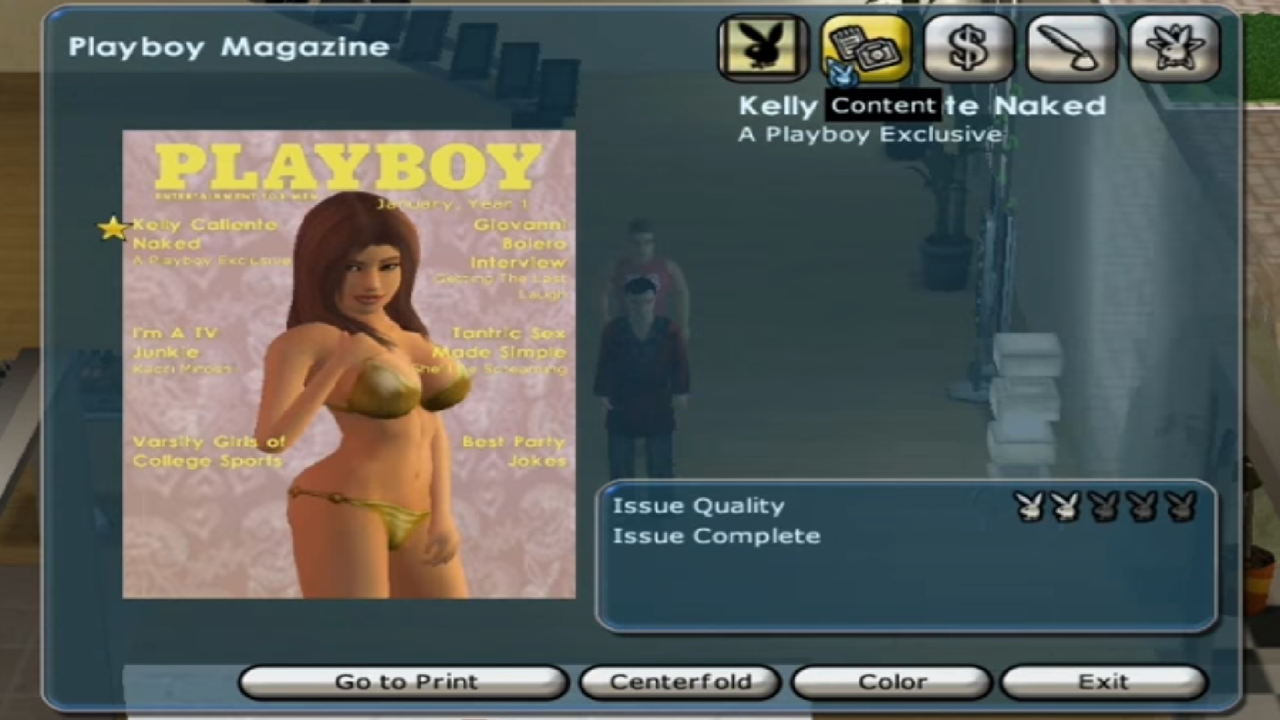
Playboy: The Mansion
Say what you will, but Playboy magazine produced some excellent writing. Jokes about "reading it for the articles" aside, Playboy featured writing from the likes of Hunter S. Thompson, Carl Sagan, Ray Bradbury, and Ian Fleming. So, how do we make a game about a magazine with serious articles, erotic centerfolds, and a dark, controversial history? Moreover, why would we make a game about such a thing?Playboy: The Mansion, is a bizarre mix of The Sims and a tycoon game. You take the role of Playboy founder Hugh Hefner. Your goal is to put out a magazine every month (each needs pictures, essays, and interviews), throw parties, build relationships with celebrities, and decorate your house. Playboy: The Mansion doesn’t focus on any one aspect enough to make it entertaining. At times, I’d even call it deeply uncomfortable.
Forming relationships is a matter of choosing between business talk, romantic talk, and compliment. Once you’ve formed a relationship with your female employees, you can ask them to pose for the magazine. Taking pictures is viscerally uncomfortable as your camera moves in circles around a soulless NPC. That kind of describes the whole experience. Moreover, you can proposition your employees provided you have enough clout with them. It’s not sexy, it’s not entertaining, it’s not strategic, and it’s not particularly difficult. It’s just weird and uncomfortable.
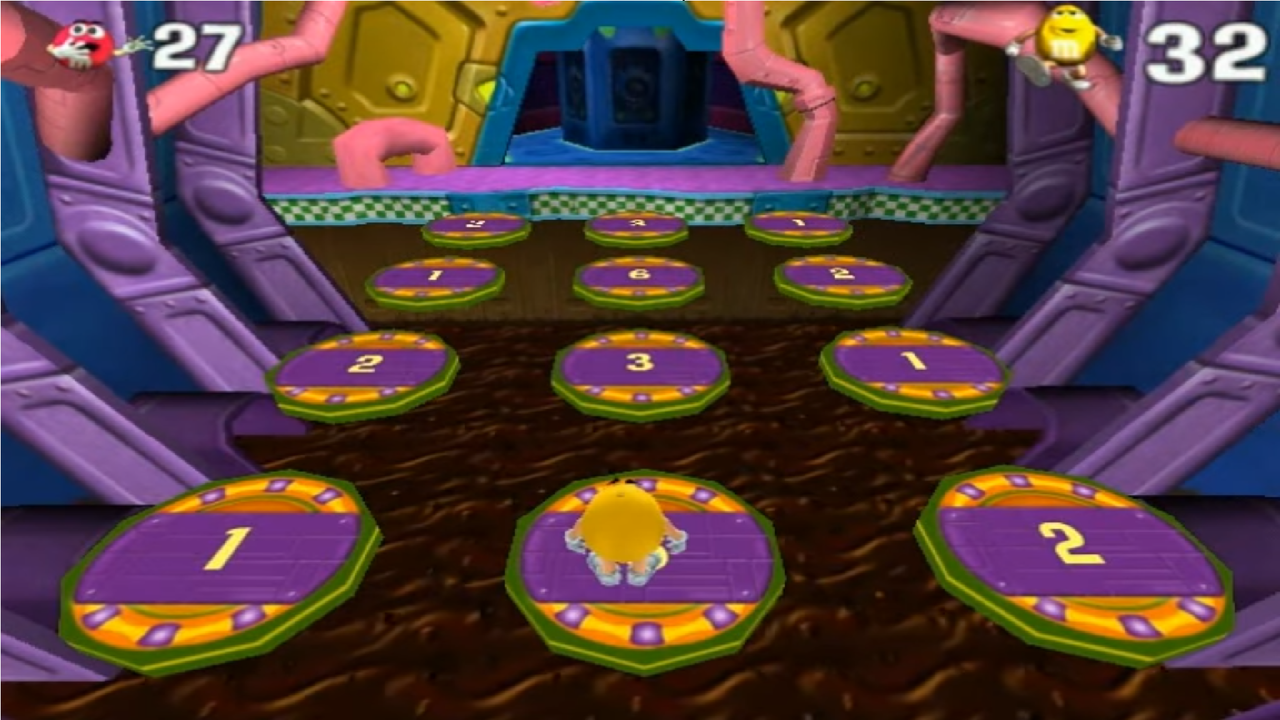
M&M’s the Lost Formulas
M&M’s has a strange relationship with their mascots. Aside from TV ads, these candy golems have appeared in a Vegas show and a cellphone PSA before movies. Yet few remember M&M’s brief foray into video games with M&M’s: The Lost Formulas.How do we turn candy into a video game? By ripping off Crash Bandicoot, of course. The Lost Formulas is almost a beat for beat copy of Crash Bandicoot, but without the flair or care of similar titles from the era such as Donald Duck: Goin Quackers. The Lost Formulas replaces wumpa fruit with M&M minis and keeps TNT and nitro identical to their source material.
Why do I considered this a weird licensed game? Because it's actually an educational game. The Lost Formulas mixes Crash Bandicoot-style gameplay with math questions. Each level has an introduction, a math stage, and a more challenging end stage. You typically solve math problems by jumping on platforms. For example, while exploring the M&M’s factory, you’ll see screens reading “12, 24, 36, 48.” When you reach the end the room, you must choose between doors 52, 79, and 60. Put in a wrong answer and the door opens to a room full of nitro. I feel like that might be an OSHA violation.
Stranger than all this is the sequel. M&M’s Shell Shocked was released a year after The Lost Formula. It is almost the same game, with added boss fights, redacted math sections, and generally shortened levels. I struggle to think of another game that rereleased with more traditionally gamey content while also removing about 1/3 of the runtime.
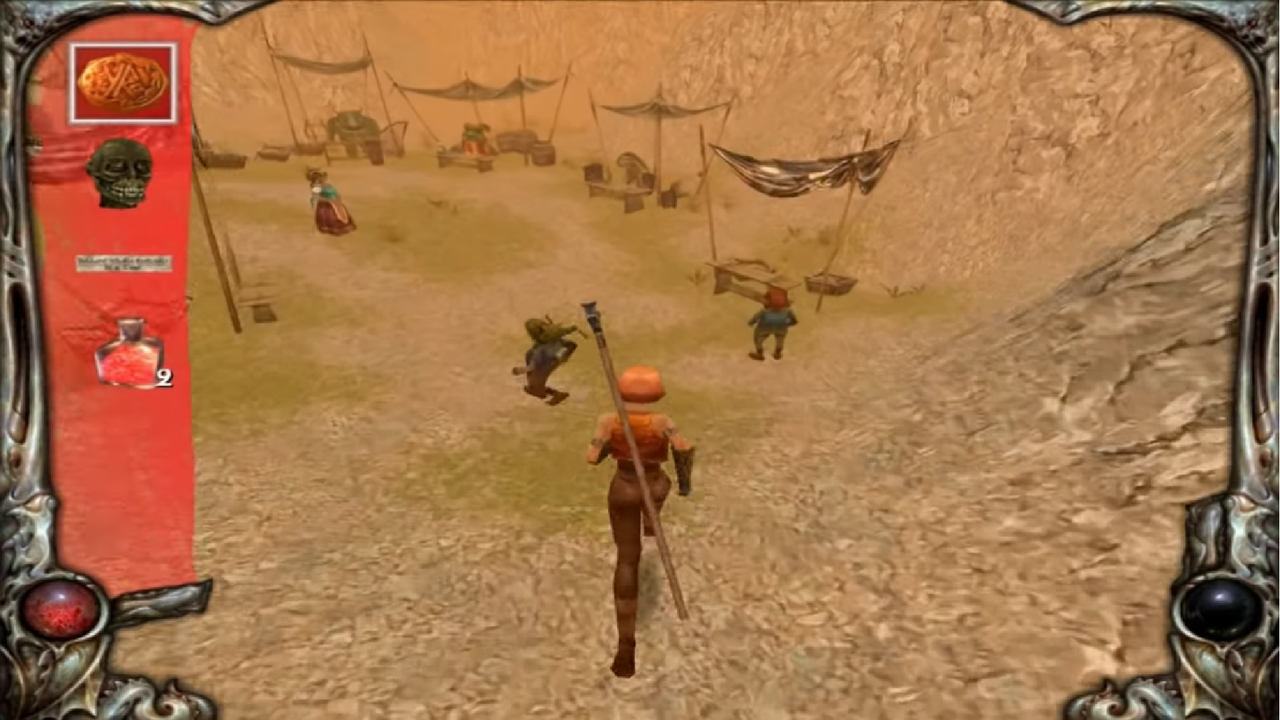
Darkened Skye
While M&M’s had the benefit of established mascots and merchandise, Skittles a Wrigley subdivision owned by Mars candy (who makes M&M’s) has nothing of the sort. When the suits at Mars order a video game tie-in for Skittles a year after M&M’s Shell Shocked, what could writers possibly come up with?Darkened Skye takes place in a bizarre comedy fantasy world where humans worship “the rainbow.” When a shepherd finds a single skittle in the forest, her crook explodes into a magic wand. The result is a 3rd person action game where you beat orcs with your staff and find skittles. Once you have enough skittles, you unlock spells and suddenly this melee brawler becomes a 3rd person shooter. Gameplay has a surprising blend of elements and the fantasy world is surprisingly unique. Even more surprising, Darkened Skye stays away from Tolkien fantasy. Darkened Skye features clockwork machines, obnoxious goblins, chameleon-eyed yak creatures, and a boatload of demons and imps.
Darkened Skye has a lot going on. Besides combat, it also features inventory puzzles and a dungeon with an elaborate password machine. If I had to guess, it looks like the developers had a half-finished fantasy game and only filled out the magic system with Skittles once they had sponsorship money. Replace Skittles with any magic rock, and the story still makes sense. To be clear, that doesn’t mean Darkened Skye is good. It’s still an outdated action game with graphics on par with Morrowind, but it holds a special place in the history of licensed games.
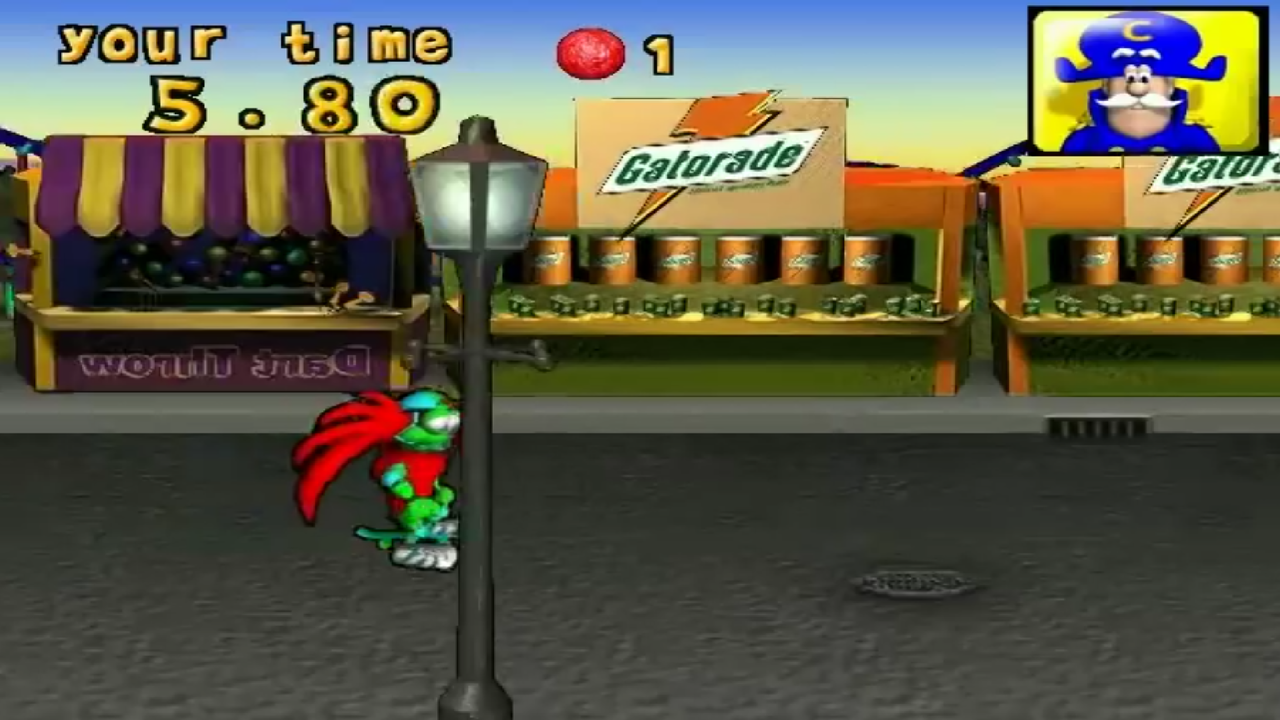
Cap’n Crunch: Crunchling Adventure
You know what a brand of sugary cereal really needed? A complex backstory set in a whismical world of cereal-themed slave labor. It has all the strengths of making a TV show and creating brand loyalty without the risk of ordering a whole season and putting it on a major TV network.Cap’n Crunch: Crunchling Adventure takes a hard look at the exploitative world of Cap’n Crunch and the poor conditions of its slave labor. I'm sorry, did you think they make Cap’n Crunch in Ontario? No no no, Cap'n Crunch grows naturally in the subterranean and serves as the only source of nutrition for a race of Oompa-Loompa knockoffs called Crunchlings. These Crunchlings struggle against a group of terrifying trolls called the Crunchium Thieves who want to steal the crunchium and … you get the idea.
Cap’n Crunch challenges the leader of the trolls, who looks like an 8ft tall purple ork, to a fitness contest. You must raise a baby Crunchling, fresh from the crunchium mines. Over the next few hours, you'll feed your Crunchling steroid-laced cereal and complete repetitive exercise activities until it grows into a bodybuilder. Then you face off against the Crunchium Thief in one of those activities. This amounts to playing the same three mini-games 20-30 times each until you’re ready to fight the boss. That’s an oddly complex story for a cereal tie-in.
Perhaps the strangest thing about the Captain Crunch game is Backwardia. Cars in Backwardia drive in reverse. Every billboard features backward text, except one. Backwardia features rows upon rows of Gatorade signs written normally. It's very important to break this complex worldbuilding to insert another product tie-in. Naturally, Quaker Oats makes Captain Crunch and also owns Gatorade. In turn, PepsiCo owns both Captain Crunch and Gatorade. Oh and the game comes with a trial for AOL online. Don’t you just love product placement in your product placement?
Have a tip, or want to point out something we missed? Leave a Comment or e-mail us at tips@techraptor.net
